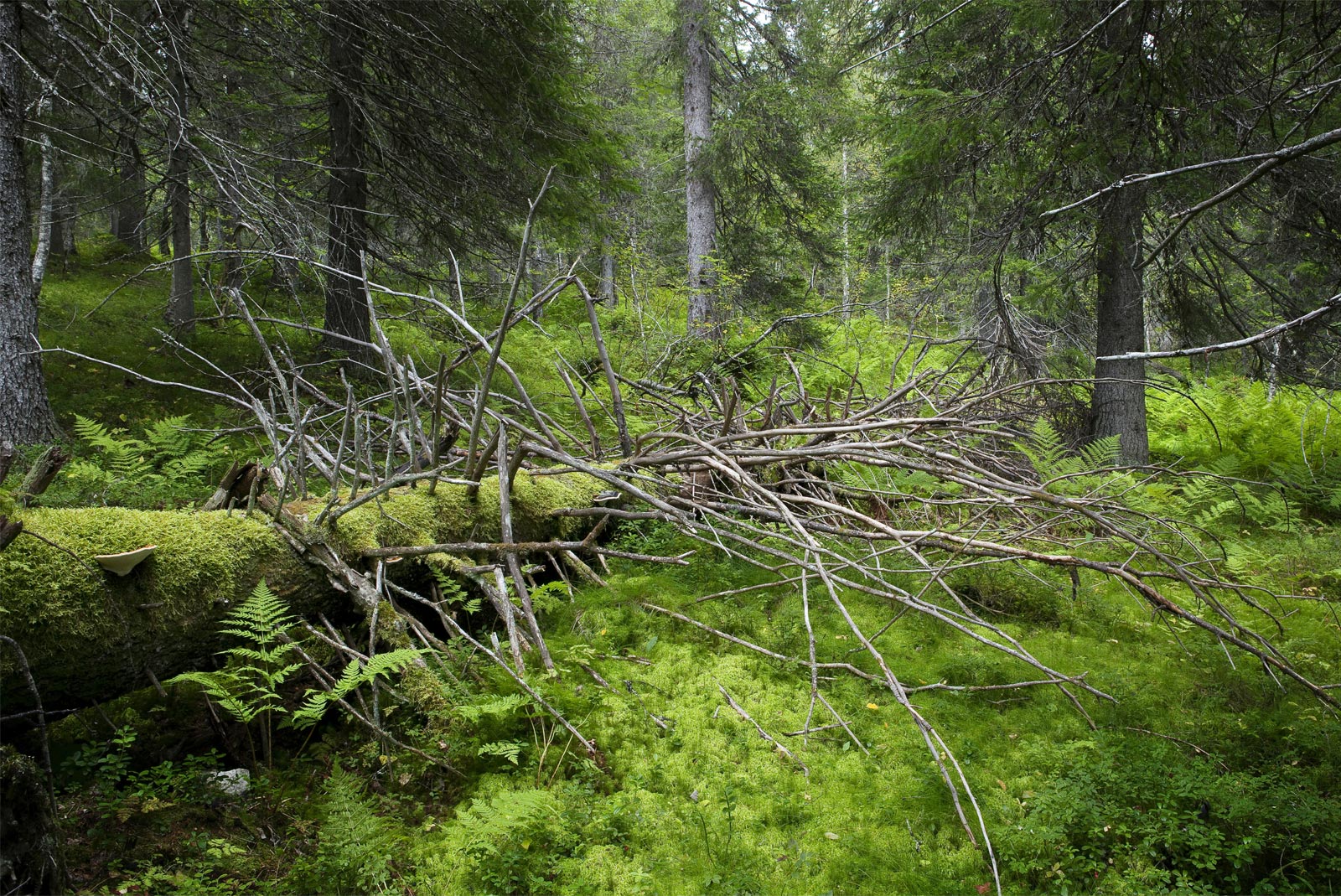The Brown Bear
The Brown Bear (Ursus Arctos) – the national symbol of Finland – is the largest carnivore in Europe. Eastern Finland is home to a large amount of brown bears.
Bear watching and photography trips are organized in the Wild Taiga area from April to September. On the overnight trips you can stay in a hide, giving you a better chance of seeing a bear visiting carcass laid down especially for them. Bear watching trips are organized for individuals and groups alike.
You can read more about brown bear and other large carnivores here.
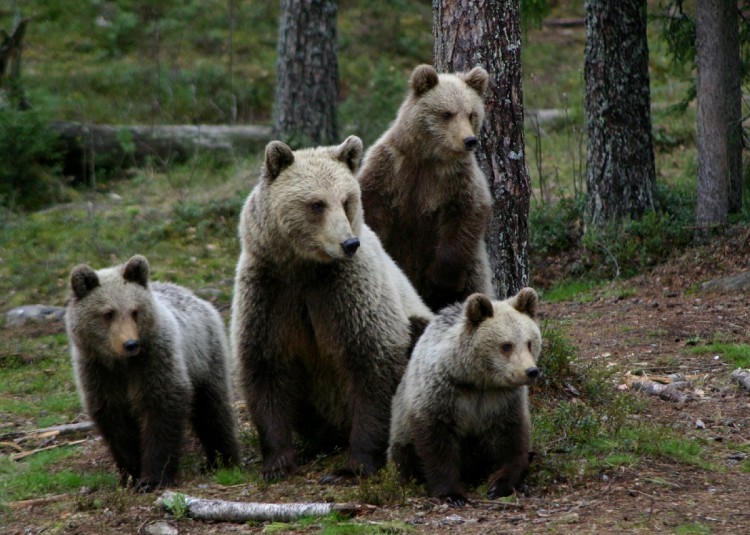
The Wolverine
The Wolverine (Gulo gulo) is the largest land-dwelling species of the Mustelidae or weasel family (the Giant Otter is largest overall) It is a mammal slightly bigger than the Badger. The shy wolverines prey at night in the dusk, and it is very rare to observe one in the wilderness.
The Wolverine, however, visits the hides all year round and from early spring until autumn there is enough light to see it properly and take decent photographs of it. With a bit of luck it can be seen even in the daytime.
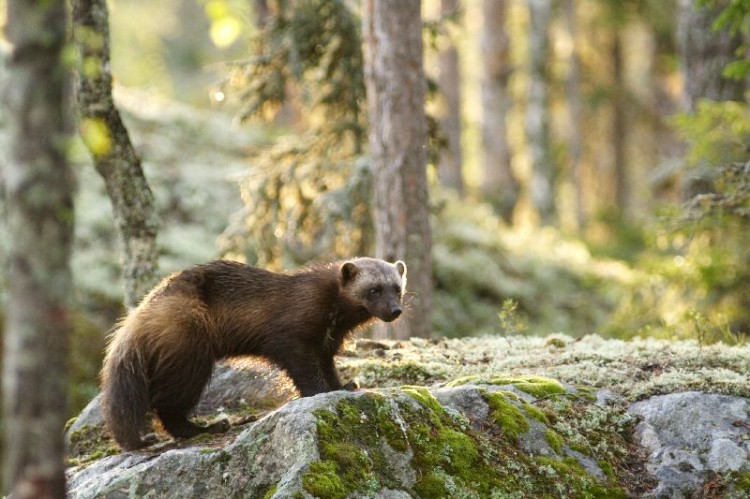
The Grey Wolf
The Gray Wolf (Canis Lupus) is a mammal living in packs, belonging to genus canis. Most of the wolves in Finland live in the eastern forests, though it is found all around Finland.
The Wolf is on the move at all times of the day and night but mainly at dusk and in the night. Wolves are not that common a sight from the hides, but there is a chance you will see them in Kuhmo border zone area. The howling of wolves at night makes the hairs on the back of the neck stand up, even on the most experienced wilderness explorers!
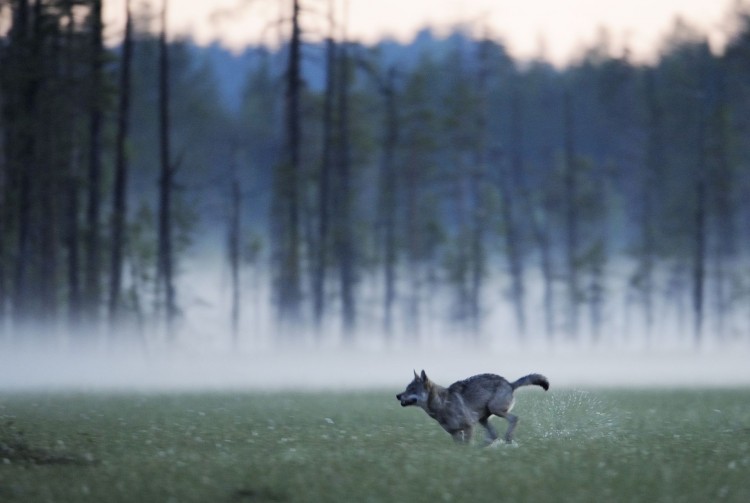
The Lynx
The lynx (Lynx lynx) is Finland’s only species of cat found naturally in the wilds. The population has become abundant through preservation (base assessment over 1000 individuals) and lynx are currently encountered throughout the nation. The weight of a lynx is typically 8-25 kg, body length 70-140 cm and tail 15-25 cm. The spotted fur of the lynx is red-grey in the summer, grey-white in the winter.
The lynx is a carnivore. In Kainuu, the lynx finds nutrition in rodents, hares and wild forest reindeer, and reindeer in general in the reindeer management area ranging from Suomussalmi to north to Lapland. Fresh meat is the main nourishment for lynx, as their teeth are poor at gnawing carrion. For this reason, lynx cannot be observed in the manner of bears, wolves and wolverines, with which carcass is used to attract otherwise invisible prowling beasts within reach of the camera.
The lynx is nimble and silent in its movements, and its sense of hearing is well-developed, unlike its sense of smell. For the most part, the lynx targets its prey by using its hearing and sharp eyesight. Due to the acute senses a lynx has, human beings rarely get to catch a glimpse of this animal in its natural habitat. However, those wishing to do so can certainly see this beautiful feline predator of the north by visiting, for instance, Ranua Wildlife Park.
The Beaver
The Beaver (Castor Canadensis), enjoys streaming waters, especially building dams and its nest in them with tree trunks, branches and mud, is quite a jolly-looking rodent. Its distinctive features are the flat, paddle-shaped tail and webbed hind feet. As a rodent the diet of a beaver consists of plants, tree bark, buds and leaves. Beavers are usually observed from a hide set near to their nest. During the lights nights they can be observed toiling and playing for many hours. The season starts in April and continues until the winter.
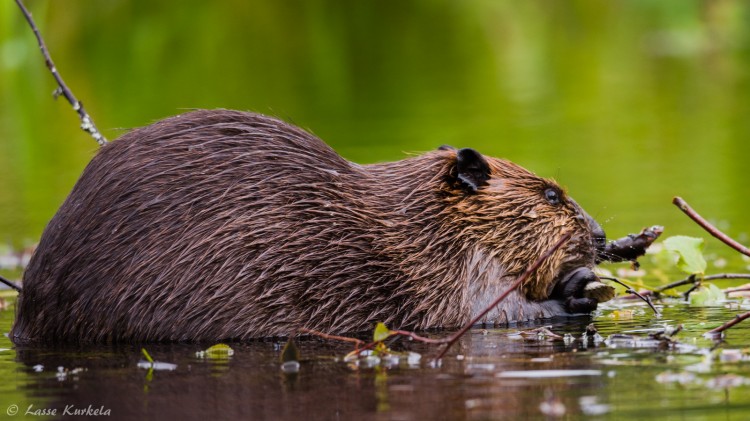
The Moose and the wild forest reindeer
The Moose or Elk (Alces alces) is the largest member of the deer family found in Finland and throughout Europe. They are distinguished by the palmate antlers of the males rather then the thinner branched antlers of the deer. It is extremely well adapted to the northern snowy areas, as its hair is hollow and thus insulates against the extreme cold. With the help of its long legs the Moose is able to walk in the snow, swamps and bush. Pastures have been found where crops lure the Moose to come and eat to give the best photographing opportunities possible. The best seasons for watching elks are spring and autumn, at dawn and dusk.
Previously hunted almost to extinction the Wild Forest Reindeer, (Rangifer Tarandus Fennicus, often called the deer in Finland) now lives solely in the Wild Taiga area and Russian Karelia, with a population of approximately 700 animals. The Forest Reindeer can be separated from other Reindeer by their slightly bigger size and longer legs. Watching and photographing the Forest Reindeer is possible all year round with the help of trained guides.
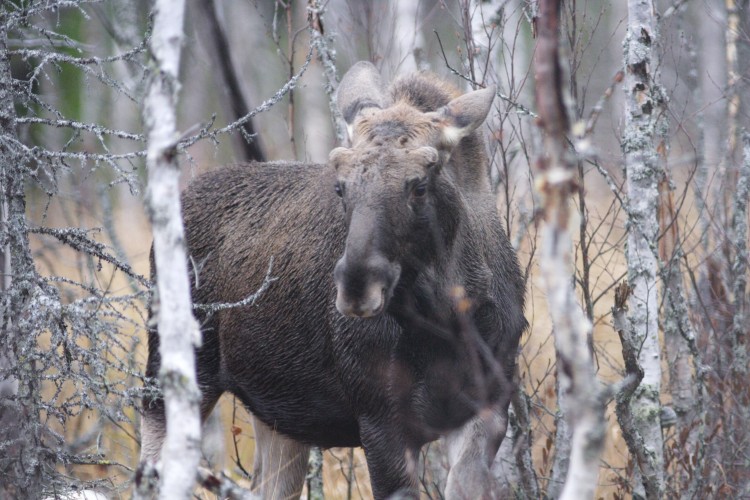
The Flying Squirrel
The Flying Squirrel is a squirrel species only found in Finland and Estonia within Europe. Flying squirrels can be seen in Kuhmo, but only in small numbers. In Kainuu it is usually observed by its nest or feeding place. The Flying Squirrel starts from its nest at sunset and you can see it literally floating from one tree to another. The Flying Squirrel can fly up to 75 metres, but when on ground it is clumsy. Walking tours to see the flying squirrels are arranged throughout the season.
The White Wale
You can also make a tour from Wild Taiga to the White Sea in North-West Russia to observe the White Whale in its natural habitat by the shores of Solovetski Convent Island.
The white whale observation trips are arranged in summer and are easily made through the international border crossing point Vartius, located in Kuhmo. You can combine whale watching with a trip to the convent found in the 15th century. The trip requires visa to Russia.





